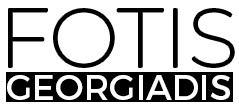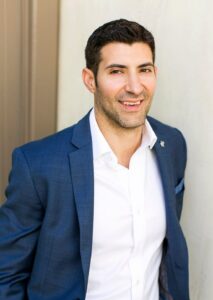An Interview With Fotis Georgiadis
Increasing diversity and creating a sense of belonging for all helps to protect employee wellbeing and mental health. Given that a recent WHO study estimated that mental health issues cost the global economy $1 trillion dollars a year in lost productivity this is a cost organisations cannot afford to ignore.
As a part of our series about “How Diversity Can Increase a Company’s Bottom Line”, I had the pleasure of interviewing Helen May.
Helen May is the founder of diversity & inclusion consultancy, Belonging@Work and author of new book Everyone Included: Improve Belonging, Diversity & Inclusion in Your Team.
Thank you so much for doing this with us! Before we dive into the main part of our interview, our readers would love to “get to know you” a bit more. Can you share a bit of your “backstory” with us?
I have been working in the talent, leadership and culture space for over 20 years, initially in the corporate world, then progressing into consulting before setting up my own business 6 years ago — which was the best move I ever made. My corporate business delivers diversity and inclusion programmes which create a sense of belonging in organisations to protect wellbeing and maximise talent. My private practice works alongside neuropsychiatrists coaching and managing programmes for neurodivergent clients.
Can you share the funniest or most interesting story that happened to you since you started your career? Can you tell us the lesson or take away you took out of that story?
I had a ‘Devil Wears Prada’ moment several years ago, when I walked out of my last job as a director in a consulting business. After being deeply unhappy there for quite a while, it was a real ‘enough’ moment and now I feel grateful in a way for having had that experience. I called a good friend after I had walked out who swiftly came to meet and took me for a stiff gin and tonic… by the end of the evening I had registered my own business, made a heap of calls and had two new clients! It was from that moment I started to overcome the dreaded Imposter’s Syndrome and, by realising what I am capable of, this opened up a successful career with real purpose about which I love.
Can you please give us your favorite “Life Lesson Quote”? Can you tell us a story about how that was relevant in your own life?
“You can do whatever you like, so long as you don’t scare the horses” As a very young child I was unique, a little eccentric and always went my own way. I spent a long time after that trying to conform. Then when I was 40 I was diagnosed with ADHD following a very dark episode of depression after the sudden, premature death of my mother. The diagnosis was liberating — it allowed me to rediscover, accept and maximize my unique attributes, so this is a maxim by which I now live my life every day.
None of us are able to achieve success without some help along the way. Is there a particular person who you are grateful towards who helped get you to where you are?
While it may sound a little cliché, it is my dad, no question about it. I am incredibly lucky to have someone like him who is unshakeable in his belief in me. After a lifelong career running businesses himself, he now works with me and is the one who ‘keeps it real’… I have a million ideas a day and he is my filter, steering me towards the ones that have legs and away from the ones that are unworkable. When I feel I am starting to lose my nerve on something he is always there saying “Just keep going” and that is enough. He is both my hero and my cheerleader.
What do you think makes your company stand out? Can you share a story?
We live in a deeply polarised world and in some respects there has been a stalling, if not backwards progression of Diversity and Inclusion efforts in the workplace. Most corporate programmes rely on transactional training, quotas and targets, which can be used to demonstrate ‘progress’ without factoring in the actual lived experience of ALL employees. Diversity means EVERYONE and everyone should be given a voice. We believe that if you want to shift a culture to be genuinely inclusive, you have to work on both hearts and minds — and, most importantly, you should not disenfranchise the largest demographic. For example, we have worked with a couple of clients whose largest demographic are ex-military men. If we had gone into these organisations shouting about white male privilege and unconscious bias, the programmes would have failed from the outset. Instead we focus on the power of curiosity, how to develop good judgement and how innovation is driven by diversity of thought. We use stories about lived experience of marginalised employees to connect all to universal emotions — after all, we all know what it feels like when we don’t belong somewhere. Our ultimate aim is to get leaders to live by the mantra “Not on my watch”… Oh and we never use management jargon!
Are you working on any new or exciting projects now? How do you think that might help people?
I am currently doing research into the lived experience of young adults with ADHD who are in apprenticeships. For this group, apprenticeships are very often the only route available post-education in the UK as many have poor academic achievement or have failed to complete school. Completion of the apprenticeship is both critical and difficult as many will find the transition to work hard — if they drop out then they are significantly more likely to end up in long term unemployment, involved in crime or a range of other negative consequences throughout the life course. Through the research I hope to be able to identify the factors which would support the transition with a view to helping shape future policy.
How have you used your success to bring goodness to the world?
I spend a significant proportion of my time doing pro bono work, coaching and mentoring young adults with ADHD, ASD or other neurodivergent conditions who are in apprenticeships — which is what inspired my academic research. I also work with their line managers helping them to understand how to manage and support their challenges and maximise their talents. I am so passionate about supporting this demographic as from an early age they are largely dismissed by others as being ‘a problem’ and they deserve a better start as they transition into adulthood
Ok. Thank you for that. Let’s now jump to the main part of our interview. This may be obvious to you, but it is not intuitive to many people. Can you articulate to our readers five ways that increased diversity can help a company’s bottom line.
- Increasing diversity and creating a sense of belonging for all helps to protect employee wellbeing and mental health. Given that a recent WHO study estimated that mental health issues cost the global economy $1 trillion dollars a year in lost productivity this is a cost organisations cannot afford to ignore.
- Diverse organisations have a better understanding of customers and buyers. Research has shown that diverse teams are able to target and create solutions for diverse markets who have a continually increasing share of consumer wealth such as women, LGBTQ+ and ethnic minorities.
- Diversity brings with it diversity of experience and diversity of thought both of which have been proven to drive innovation, which today is critical for business survival. Being able to bring diverse cultural perspectives to problem-solving also allows organisations to better serve global markets.
- Diverse organisations attract top talent. A recent Glassdoor survey found that 76% of jobseekers consider diversity important when considering an employer. And in a global talent shortage organisations need every advantage they can to compete in the talent war.
- A 2019 McKinsey study found that not only did those organisations in the top quartile in terms or ethnic and gender diversity consistently outperform others, but those in the bottom quartile were 19 percent more likely than companies in the other three quartiles to underperform on profitability. In addition those homogenous leadership teams come at an increasing cost year on year.
What advice would you give to other business leaders to help their employees to thrive?
There is one beautifully simple thing that every leader can do which will make a significant difference to each and every employee. Regularly asking “What can I do to make your life better?” shows you care about the whole person. It allows leaders to provide any support needed to help the employee to thrive and perform at their very best.
What advice would you give to other business leaders about how to manage a large team?
Rather than team, think ‘community’. A community leader is there to facilitate the wellbeing of all and help it to flourish. They provide connections between people, respond to differing needs and provide guidance on what is acceptable and unacceptable. They show courage, they are curious and above all they lead with humanity. It isn’t difficult — we just need to dismantle the bureaucracy that has stifled organisations for far too long, making leadership over-complicated, cumbersome and largely ineffective. Take off the shackles and just focus on exactly what it is your team needs from you to flourish.
We are very blessed that some of the biggest names in Business, VC funding, Sports, and Entertainment read this column. Is there a person in the world, or in the US whom you would love to have a private breakfast or lunch with, and why? He or she might just see this 🙂
I recently read Humanocracy by Gary Hamel and Michele Zanini which I found to be a breath of fresh air and very much in line with my thinking regarding how bureaucracy stifles talent. I have followed Gary throughout my career and I would love to chat with him about how his thinking has evolved over the years and why, as well as what he thinks the future may bring — both what he hopes and what he fears.
How can our readers further follow your work online?
On my blog at belongingatwork.co.uk and on LinkedIn /helenmay
Thank you for these excellent insights. We wish you continued success in your great work.
Helen May Of Belonging@Work On How Diversity Can Increase a Company’s Bottom Line was originally published in Authority Magazine on Medium, where people are continuing the conversation by highlighting and responding to this story.



